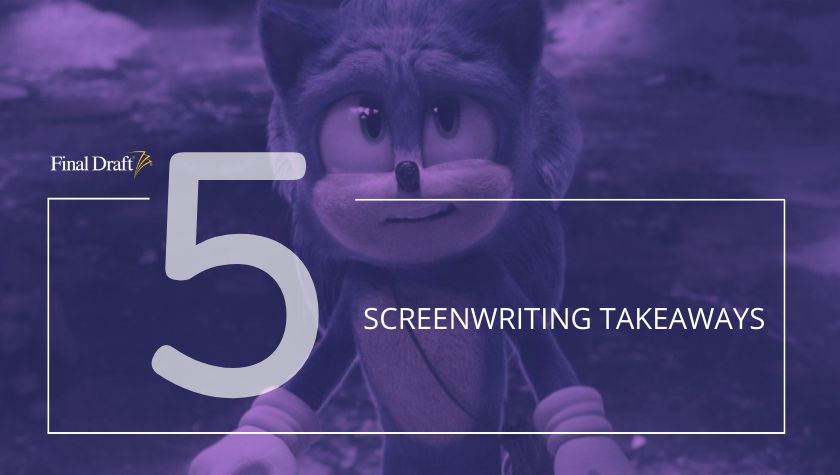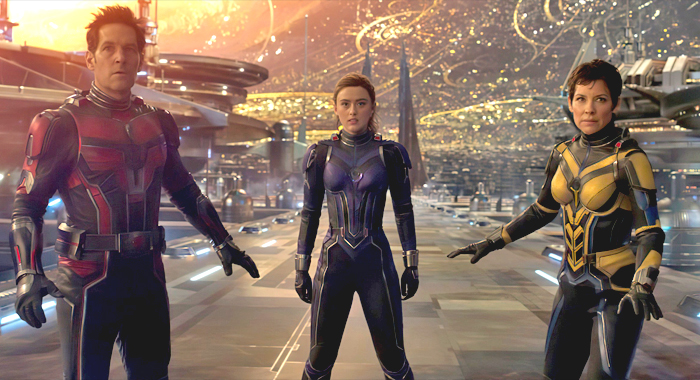All the Write Moves: Ant-Man and the Wasp
July 16, 2018
There’s an easygoing charm to Ant-Man (2015) and its current sequel, Ant-Man and the Wasp, that some Marvel Cinematic Universe pictures with more spectacle and sweep can’t match. And while Ant-Man and the Wasp isn’t nearly as sprightly as its predecessor, there’s a lot to admire in the way screenwriters Chris McKenna, Erik Summers, Rudd, Andrew Barrer, and Gabriel Ferrari, together with director Peyton Reed, move the sequel’s story along.
Largely freed from the obligations to advance franchise mythology that burden other MCU writers, the consortium that crafted the script for Ant-Man and the Wasp strive for light adventure by balancing earnest character work, goofy comedy, and wild sci-fi action into something that’s effortless to watch. The techniques they employ in pursuit of their goal are educational.
Mission Statement
Ant-Man and the Wasp opens with a prologue featuring the two most important supporting characters from the first film, Hank Pym (Michael Douglas) and Hope Van Dyne (Evangeline Lilly). To recap, aging scientist Hank once invented “The Pym Particle,” which allows objects to instantly shrink to tiny proportions or grow to giant proportions. In the ’80s, he and his wife, Janet Van Dyne (Michelle Pfeiffer) worked as super-agents for American spy organization S.H.I.E.L.D., using the code names Ant-Man and the Wasp. The first film involved amiable ex-con Scott Lang (Paul Rudd) inheriting the Ant-Man identity.
As viewers learned in the first movie, Janet once shrunk to a sub-atomic size in order to thwart a nuclear attack, and this caused her to disappear into something called “the quantum realm.” Elsewhere in the first movie, Scott shrunk to sub-atomic size and briefly entered the quantum realm but returned safely.
Hence the Ant-Man and the Wasp prologue, during which Hank contrives a plan to learn from Scott’s adventure, travel to the quantum realm and rescue the long-lost Janet Van Dyne if she’s still alive. Unfolding in a scant few minutes before the movie’s opening credits, this prologue explains the film’s main plot clearly and simply, thus allowing the writers to venture into discursive jokes and subplots without losing the audience.
The prologue represents a simple but useful technique that Marvel movies have employed again and again—before kicking narratives into overdrive with twists and turns, it’s crucial to inform viewers about the story’s ultimate goal so everything that follows has momentum and purpose.
Takeaway: Plug the destination into your story’s GPS system before departure.
The Name Game
Once the story gets cooking, the film introduces the main villain Ghost (Hannah John-Kamen), a woman with the ability/curse to “phase” through solid matter. How she got her powers, and how her situation relates to the main plot thread of rescuing Janet Van Dyne, is way too complicated to explain here—but that’s the point. As the writers of Ant-Man and the Wasp demonstrate, sometimes the complicated stuff doesn’t matter all that much.
To be clear, it’s always essential for screenwriters to understand the mechanics of their own narratives. Even if stories involve made-up phenomena and/or technology, screenwriters must honor the “rules” so that storylines maintain scene-to-scene interior logic. Yet a common trap into which sci-fi writers fall is assuming that the reader and/or viewer needs to know all the details. Generally speaking, shorthand is better.
The writers of Ant-Man and the Wasp employ simplistic names for mind-warping concepts. Instead of trying to explain every weird aspect of the sub-atomic space in which Janet is trapped, the writers simply call it “The Quantum Realm” and move along.
Better still, they make a wry joke about the fungibility of the naming convention.
In one scene, Scott, Janet, and Hank meet with Hank’s former partner, Bill Foster (Laurence Fishburne), leading to a conversation about several esoteric concepts related to “The Quantum Realm,” as in “quantum this,” “quantum that,” and so on. Lost and skeptical, Scott asks, “Do you guys just put ‘quantum’ in front of everything?” The question could just as easily be posed to the screenwriters of Ant-Man and the Wasp—and the answer is “yes,” with good reason.
Takeaway: Give readers/viewers handles for grasping strange concepts.
It’s Complicated
If there’s a significant shortcoming to Ant-Man and the Wasp, it’s that the film’s main action element—the ongoing battle with Ghost—feels perfunctory. To some degree that’s just bad luck, since this year’s other Marvel movies, Black Panther and Avengers: Infinity War, feature the most interesting villains yet presented in the MCU. By comparison, Ghost is forgettable. However, nearly every other character in Ant-Man and the Wasp works, either by satisfying or subverting expectations.
Scott’s arc in Ant-Man and the Wasp essentially repeats his arc from the previous film, but he carries most of the film’s emotional weight thanks to his ongoing efforts to balance fatherhood with heroism. Hope’s arc deepens significantly, albeit in predictable ways, because she assumes a superhero identity as the new Wasp while facing the possibility of a family reunion. Although both characters are entertaining to watch, their modalities are obvious.
Less obvious are the patterns followed by Hank and by Scott’s business partner, perpetually upbeat ex-con Luis (Michael Peña).
Hank is that richest of character archetypes in fantasy storytelling, the dubious mentor, an archetype also represented by Merlin in the King Arthur myth, Gandalf in the Lord of the Rings franchise, and Ben Kenobi in the Star Wars franchise. The dubious mentor is not the same as a bad mentor, meaning a character who deliberately steers an apprentice wrong. Instead, a dubious mentor gives both good and bad advice, depending on circumstances. Interaction with a dubious mentor forces the apprentice to grow from a follower to a peer by learning to differentiate between good and bad advice.
In Ant-Man and the Wasp, Hank is alternately condescending, petulant, supportive, and warm to Scott—he makes it eminently clear that he sorta/kinda trusts Scott without actually respecting Scott. This fraught relationship is exacerbated by the intense emotions Hank experiences once the possibility of reconnecting with his lost love, Janet, becomes real.
Luis, on the other hand, is the epitome of comic relief, as demonstrated by his tendency to embark on motor-mouthed speeches whenever an idea stimulates his discombobulated mind. Luis’ singular conversation style pays off with a great joke in Ant-Man and the Wasp, when a bad guy unwisely injects Luis with truth serum and asks a simple question. A monologue riddled with footnotes and sidebars ensues, but Luis’ buddy Dave (Tip “T.I.” Harris) tells the bad guy that’s the price of asking Luis a question: “When you put in a dime,” he says, “you have to let the whole song play.”
Takeaway: A surprising character is an engaging character.
Written by: Peter Hanson
Peter Hanson is a Los Angeles-based writer, filmmaker and teacher. He directed the screenwriting documentary Tales from the Script, and he teaches at Pepperdine University and UCLA Extension. He provides script consulting at www.GrandRiverFilms.com.



